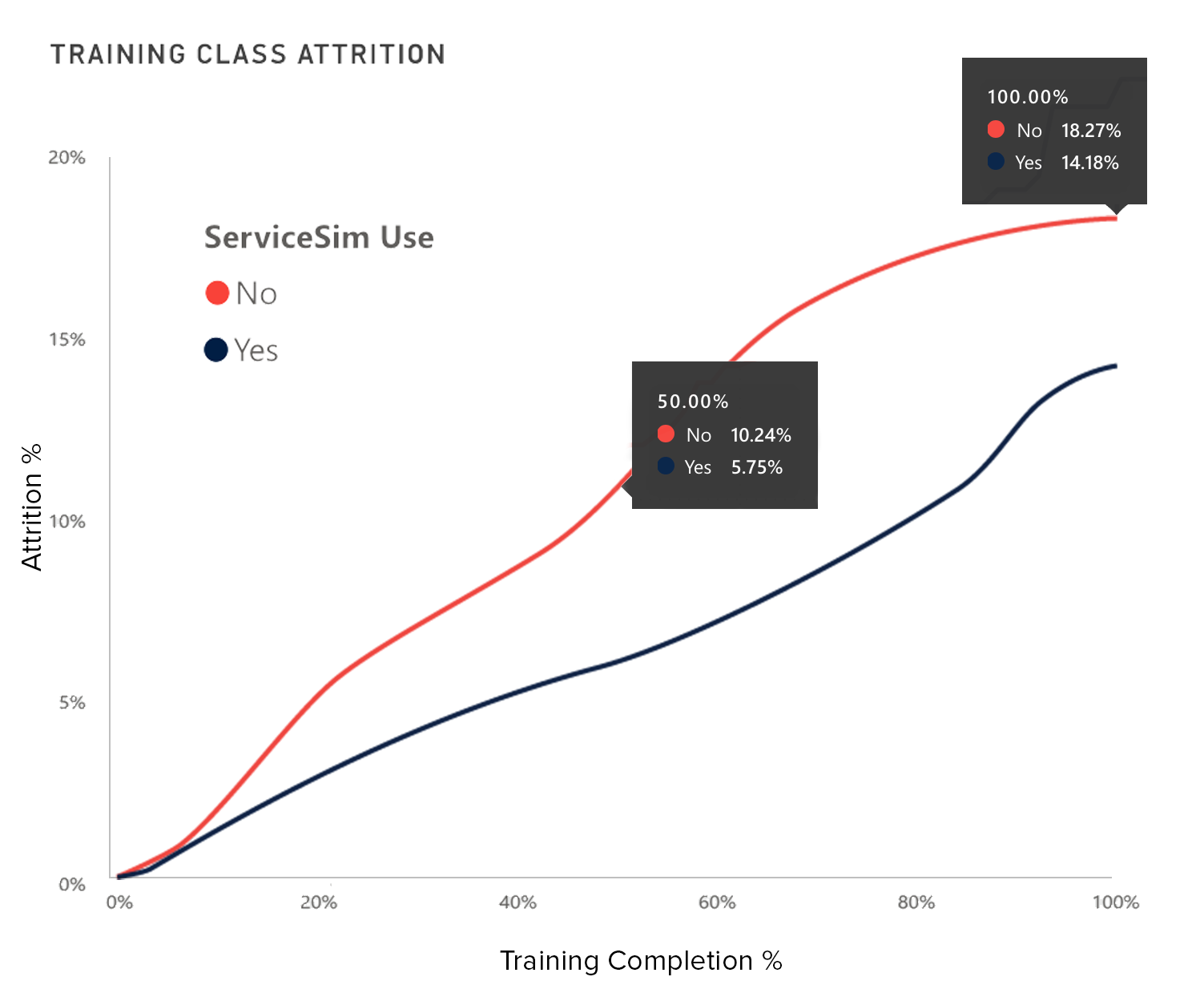Let’s start with what training looks like in most contact centers: new agents sitting in rows of chairs facing a PowerPoint presentation, frantically typing notes or trying to memorize information.
Training should be as close to reality as possible. And this classroom-style setting couldn’t be further removed from the contact center floor.
So how did we get here?
Contact centers want to offer agents the right training, but many don’t have software or systems that include a user training environment. And while some can recreate parts of their technology environment for training purposes, developing a cohesive program without the technology to support it is difficult.
For contact centers providing customer service for a vendor partner, it’s often the partner who controls the technology, further complicating the issue.
And a few contact centers feel there’s no harm in training the way they always have, but that simply isn’t true.
Training agents using lengthy presentations and complex knowledge bases has major pitfalls.
When agents aren’t trained on the technology they’ll use on the job, they’re ill-prepared to transition to interacting and assisting customers successfully.
Agents who aren’t trained in a technology environment…
- don’t know the nuances of real customer scenarios.
- have difficulty juggling technology and customer calls.
- struggle to find the right answers when interacting with customers.
- become frustrated easily and underperform or quit.
To avoid these issues, agents need training that goes beyond the classroom.
The difference between concept and practice.
“You wouldn’t learn how to drive a car in a classroom, just like you wouldn’t learn how to talk customers through a problem in a classroom. Driving a moving vehicle on the road is much different from learning how to change lanes in class.”
—Tom Benton, Head of Operations at Vistio
There’s a large gap between learning a concept and performing the task itself, and that’s why real-world modeling is necessary. Creating an environment that matches an agent’s day-to-day reality as closely as possible is vital when setting agents up for success.
Agents need to be trained on the same technology that they’ll use on the job to ensure smooth transitions from training to the floor.
Keep Reading: CX Training at its Best: Integrative, Cost Effective, and Psychologically Fortifying
Benefits of training new agents on technology.
Efficiency
When provided with the right training, agents can quickly progress from training to helping customers, accelerating their path to proficiency.
Quality
Technology simplifies agent training, giving agents the support they need to solve every problem they encounter. They’ll handle each call with ease, hitting quality checkpoints and raising CSAT scores.
Confidence
When agents are trained on the same technology they’ll use on the job, they know what to expect. They’ll feel confident tackling customer calls while expertly navigating technology that’s simple and familiar.
Happiness
Agents will be less stressed or in need of assistance. They’ll feel good about how they’re performing, and they’ll want to continue improving.
Comprehensive training impacts customer experience and contact center performance.
Benefits to customers
- When agents are confident, customers can feel confident in their agent’s response.
- Customers won’t be put on hold and will enjoy quicker, more seamless service.
- When agents know what to do, customers can expend minimal effort.
- Customers will leave each call with increased satisfaction.
Benefits to contact centers
- Contact centers can replicate their best agent by giving every agent the same opportunity to achieve consistent results.
- Training agents on the same technology increases the speed to proficiency, creating more productive agents in less time.
- Agents can resolve customer issues on the first call, leading to better performance metrics and happier customers overall.
- When agents perform well, they’re motivated to continue helping customers with quality and efficiency. Happy, engaged agents = increased retention.
Contact centers need technology built for agents.
It’s time to utilize technology that offers a training environment for agents.
Agent-focused technology like Vistio’s AgentHub simplifies and accelerates the training process with an environment that mirrors what new agents will experience on the job. What agents are trained on is what they’ll see when interacting with customers: the same interface, the same steps, the same workflows. Nothing is different.
The bottom line: a technology-based training environment makes all the difference. Making the switch is advantageous for all contact centers, as realistic training leads to highly capable agents, happier customers, and seamless customer experiences.

